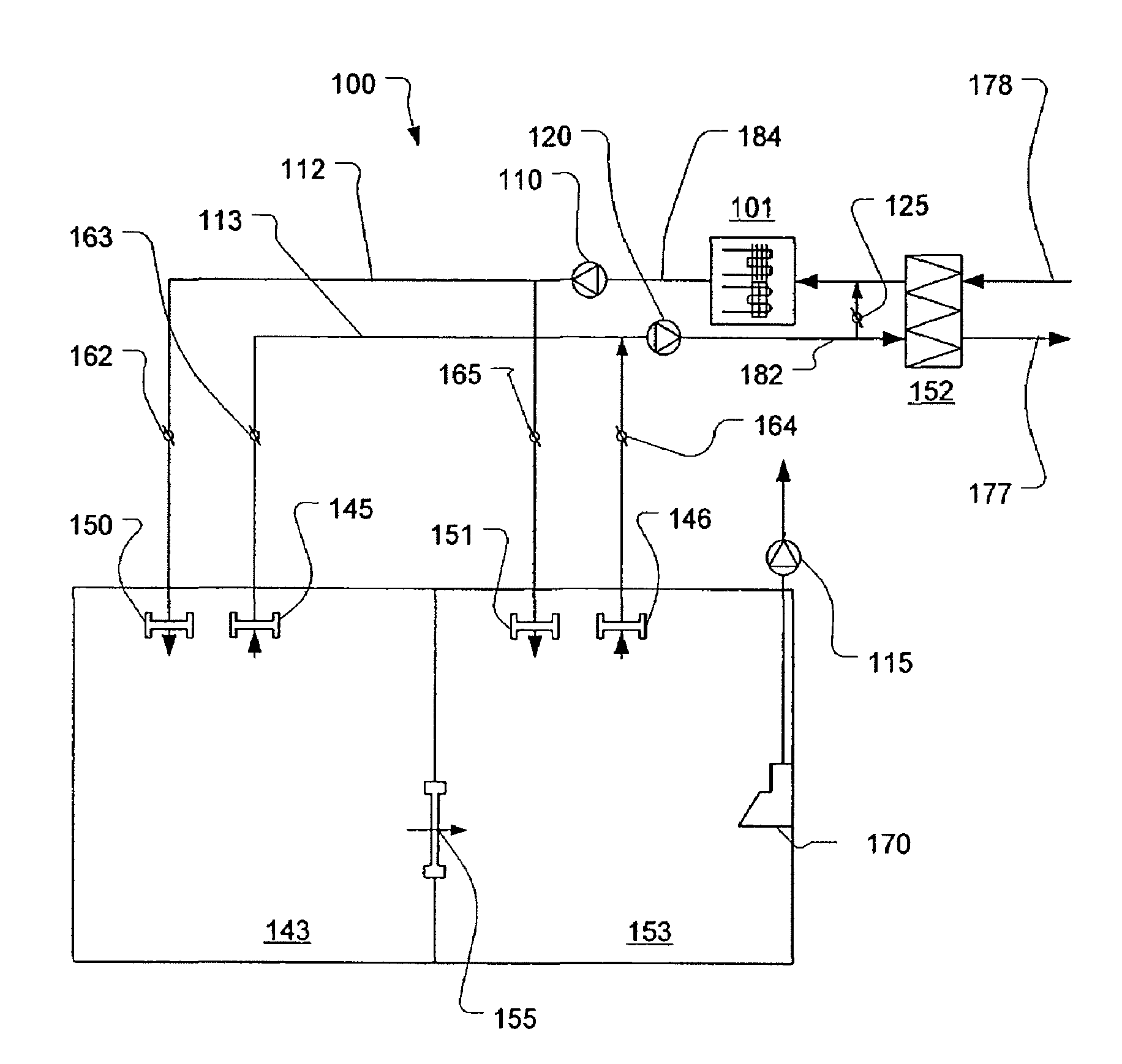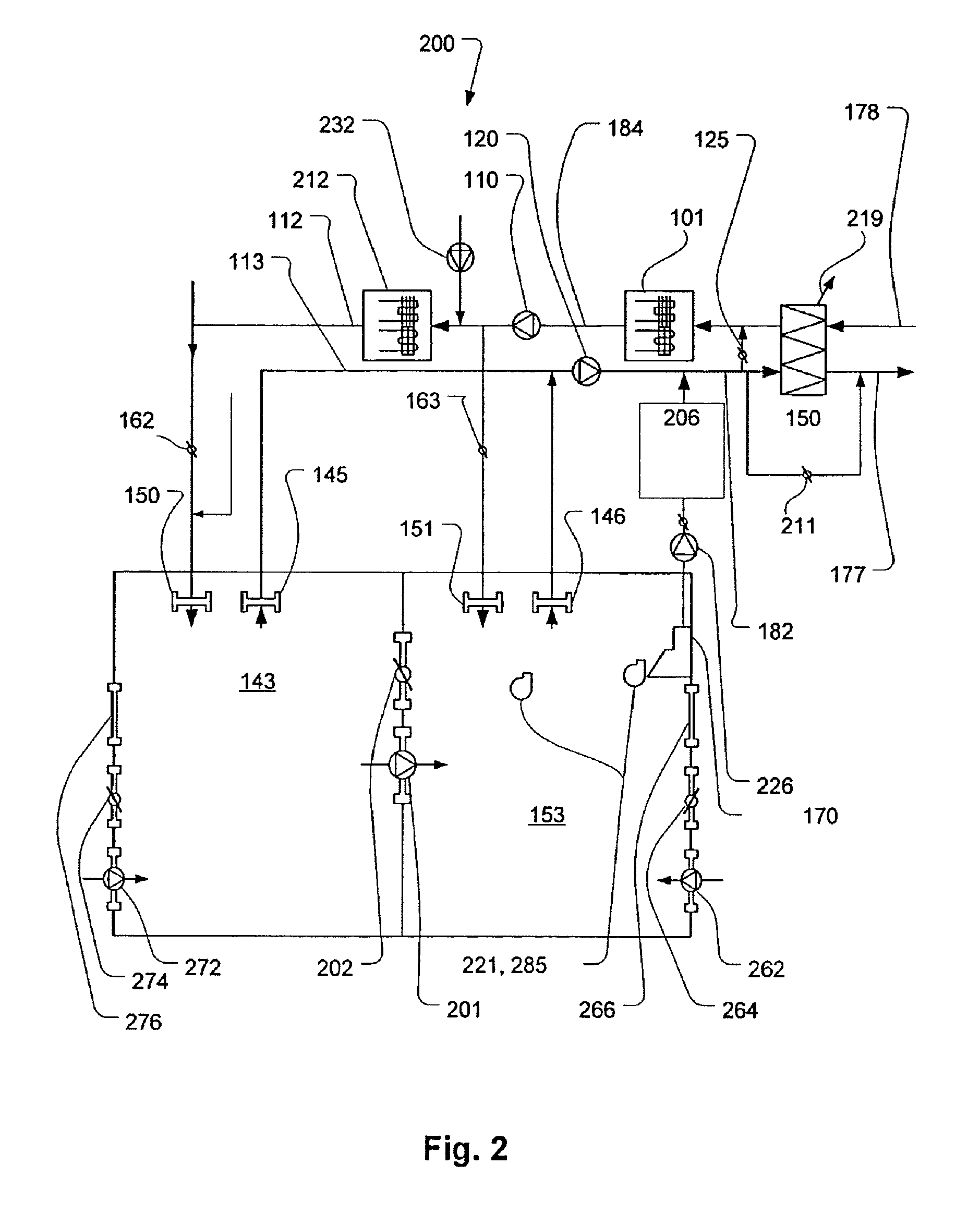Method and apparatus for controlling space conditioning in an occupied space
a technology for controlling space and space conditioning, applied in ventilation systems, heating types, stoves or ranges, etc., can solve the problems of difficult economic justification of capital investment, long payback period for incremental increase in quality, and complex control systems that are usually not economically justified in systems
- Summary
- Abstract
- Description
- Claims
- Application Information
AI Technical Summary
Problems solved by technology
Method used
Image
Examples
Embodiment Construction
Referring to FIG. 1, occupied 143 and production 153 spaces are served by an HVAC system 100. The production space 153 may be one or multiple spaces and include, for example, one or more kitchens. The occupied space 143 may be one or many and may include, for example, one ore more dining rooms. The system 100 draws return air through return registers 145 and 146 respective to the occupied 143 and production 153 spaces.
The return registers 145, 146 are in communication with return lines that join and feed a common return line 182 through which air is drawn by a fan 120. The common return line 182 leads to an air / air heat exchanger 152, which transfers heat (and in some types of air / air heat exchangers, moisture as well as heat) from the outgoing exhaust flow in the common return line 182 to an incoming fresh air flow 178. A recirculating flow of air is modulated by a return air (RA) damper 125.
Fresh air, preconditioned by flow through the air / air heat exchanger 152, and drawn by a fa...
PUM
 Login to View More
Login to View More Abstract
Description
Claims
Application Information
 Login to View More
Login to View More - R&D
- Intellectual Property
- Life Sciences
- Materials
- Tech Scout
- Unparalleled Data Quality
- Higher Quality Content
- 60% Fewer Hallucinations
Browse by: Latest US Patents, China's latest patents, Technical Efficacy Thesaurus, Application Domain, Technology Topic, Popular Technical Reports.
© 2025 PatSnap. All rights reserved.Legal|Privacy policy|Modern Slavery Act Transparency Statement|Sitemap|About US| Contact US: help@patsnap.com



